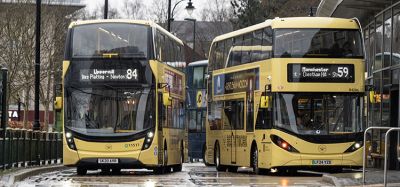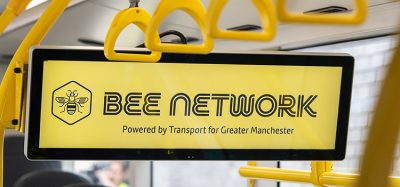AVL system evolution at Omnipart
- Like
- Digg
- Del
- Tumblr
- VKontakte
- Buffer
- Love This
- Odnoklassniki
- Meneame
- Blogger
- Amazon
- Yahoo Mail
- Gmail
- AOL
- Newsvine
- HackerNews
- Evernote
- MySpace
- Mail.ru
- Viadeo
- Line
- Comments
- Yummly
- SMS
- Viber
- Telegram
- Subscribe
- Skype
- Facebook Messenger
- Kakao
- LiveJournal
- Yammer
- Edgar
- Fintel
- Mix
- Instapaper
- Copy Link
Posted: 23 June 2006 | ET | No comments yet
Customers’ requirements for Automated Vehicle Location systems (AVL) are changing. During the last 10 years, public authority funding has been reduced and gradually redirected to meet different requirements. Paradoxically, the expectations of authorities on transport operators has actually increased, especially in terms of performance and quality. Simultaneously, transport operators are experiencing increased competition from both operators in adjoining areas and from some important foreign companies. Last but not least, the end-user of the service, the passenger, has increasingly high expectations of the transport system and in particular requires very sophisticated and accurate real-time information about many things, including arrival times and connections. Most significantly, as competition increases and expectations of service rise, many smaller operators are seeking to offer the same levels of customer service as were previously only possible for the larger operators in cities and principal towns.
Customers’ requirements for Automated Vehicle Location systems (AVL) are changing. During the last 10 years, public authority funding has been reduced and gradually redirected to meet different requirements. Paradoxically, the expectations of authorities on transport operators has actually increased, especially in terms of performance and quality. Simultaneously, transport operators are experiencing increased competition from both operators in adjoining areas and from some important foreign companies. Last but not least, the end-user of the service, the passenger, has increasingly high expectations of the transport system and in particular requires very sophisticated and accurate real-time information about many things, including arrival times and connections. Most significantly, as competition increases and expectations of service rise, many smaller operators are seeking to offer the same levels of customer service as were previously only possible for the larger operators in cities and principal towns.
Customers’ requirements for Automated Vehicle Location systems (AVL) are changing. During the last 10 years, public authority funding has been reduced and gradually redirected to meet different requirements. Paradoxically, the expectations of authorities on transport operators has actually increased, especially in terms of performance and quality. Simultaneously, transport operators are experiencing increased competition from both operators in adjoining areas and from some important foreign companies. Last but not least, the end-user of the service, the passenger, has increasingly high expectations of the transport system and in particular requires very sophisticated and accurate real-time information about many things, including arrival times and connections. Most significantly, as competition increases and expectations of service rise, many smaller operators are seeking to offer the same levels of customer service as were previously only possible for the larger operators in cities and principal towns.
Now multiple operators may provide transport services in a region – maybe a rural area, maybe a group of towns – and need to invest in AVL systems for fleet operations control, for quality of service and to deliver real-time-passenger information. But small operators cannot afford big-ticket AVL systems.
Now the story moves to Southern Bavaria where some time ago a group of private operators founded a co-operative called Omnipart. The co-operative comprised of ten operators serving 170,000 passengers per day, travelling on 730 buses on 270 different routes. This group has now added full AVL based services to benefit all its members.
This was made possible using an AVL system with multiple user capabilities based upon a common host server. Each operator can independently monitor and operate his own routes without seeing or interfering with any other operators’ data. Of course, it is also implicit that no one can view the data unless permission is given. The benefits that Omnipart has brought include improved performance, quality and because they now have only one, not ten, scheduling systems, there are also cost benefits.
This system, from Berlin based PSI Transportation, has been partly funded by the state – with a proviso that all other operators in Germany, who are not yet part of Omnipart, are not excluded from future participation. This means that Omnipart has to give access to the AVL system to any operator who wishes to participate – so no technical or commercial barriers to stand in the way of service.
So how does this concept work in practice? Omnipart will lease all of the equipment needed to use the AVL system to any transport operator anywhere in Germany, for a monthly fee. The transport operator simply establishes a standard DSL connection to the server at Omnipart and installs an operations workstation at his site. Suitable on-board computers with ticketing capabilities are supplied for installation in the fleet’s buses and then the AVL application, including all necessary data communication, can be installed together with ticketing or other applications.
The final stage in the process is to import the service schedule and then the system goes live. Once this is done, the operator can monitor and control his fleet, communicate with the drivers and deliver real-time running information to passengers. Commissioning time for a new operator joining the system is measured in weeks, not months.
Having so far stressed the separation (by operator) of data in the system it should also be noted that, being part of a bigger system, each operator will automatically deliver real-time running information to a Bavarian wide real-time information and routing system. This is a unique feature for Germany and although Omnipart is a collective of ten operating companies, this system could also have been hosted by one of the public authorities that it serves. In either case, the expectation is that the problems of interfacing different systems with proprietary protocols will be removed (PSI uses open standard interfaces) and individual smaller operators will be able to offer improved service whilst participating in a regional unified real-time information system.
Related topics
Travel & Passenger Information
Issue
Issue 2 2006








